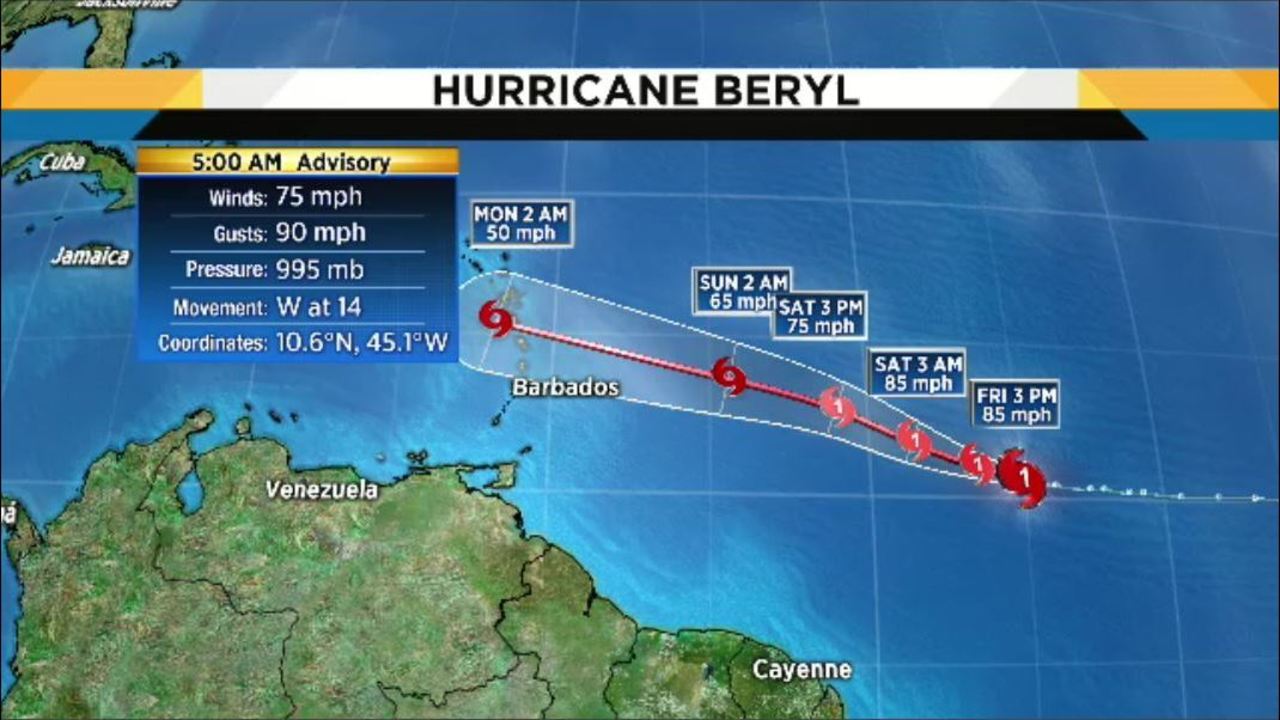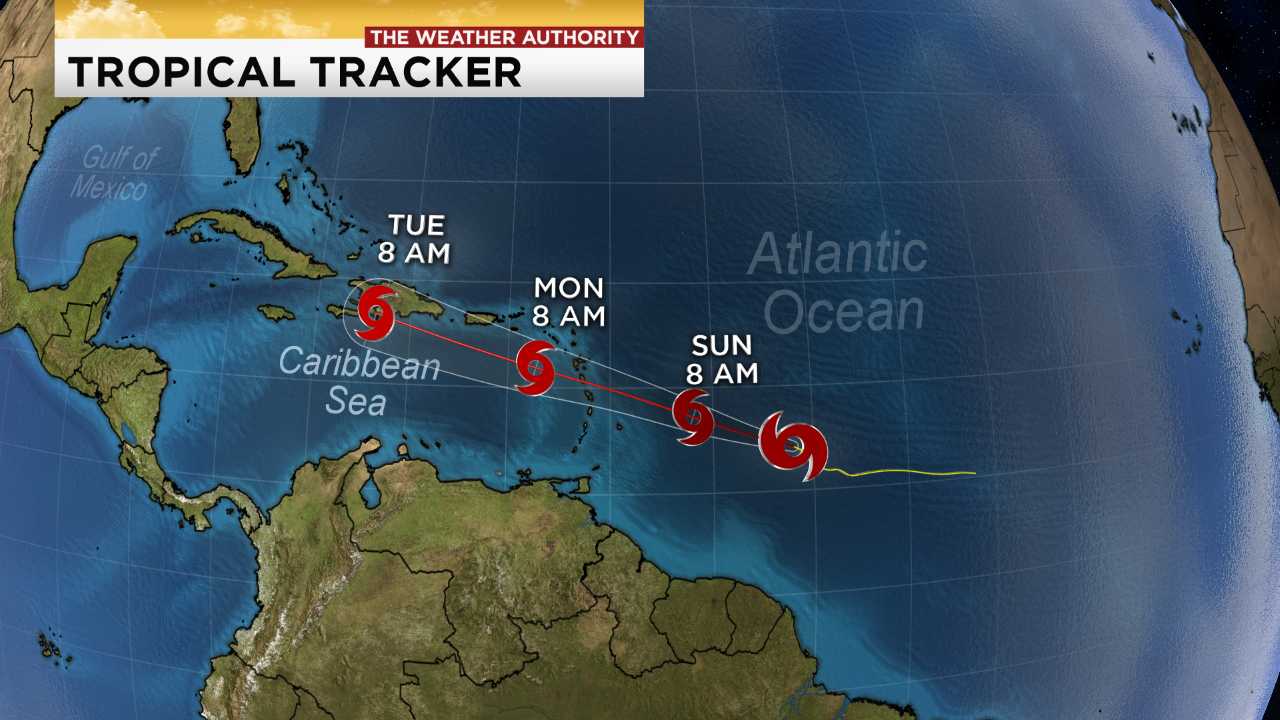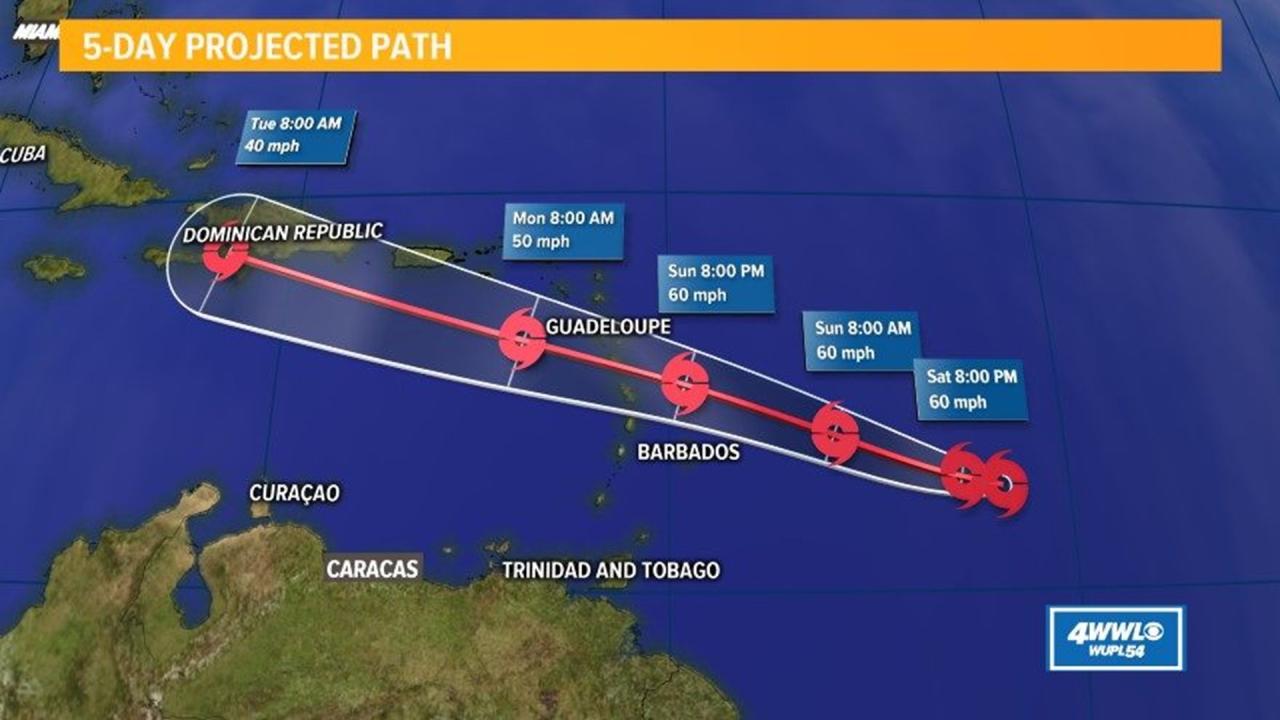Hurricane beryl path – Embark on a comprehensive exploration of Hurricane Beryl’s path, from its historical origins to predictive modeling and impact assessment. Delve into the intricate factors shaping its trajectory, potential landfall locations, and strategies to mitigate its impact.
Unraveling the mysteries of Hurricane Beryl’s path, we delve into historical data, employ predictive techniques, and analyze potential impacts to provide a comprehensive understanding of this formidable weather phenomenon.
Historical Path Analysis
Hurricane Beryl emerged as a tropical depression on July 5th, 2023, over the eastern Atlantic Ocean. The depression strengthened into a tropical storm later that day and was given the name “Beryl.” Beryl continued to intensify as it moved west-northwestward, reaching hurricane status on July 7th.
Formation and Early Movement
Beryl originated from a tropical wave that emerged from the coast of Africa. The wave moved westward across the Atlantic, gradually organizing and strengthening. As it approached the Lesser Antilles, environmental factors, including warm ocean waters and favorable wind patterns, supported its development into a tropical depression.
Impact of Environmental Factors, Hurricane beryl path
The hurricane’s path was significantly influenced by environmental factors throughout its lifespan. Warm ocean waters provided the energy needed to sustain Beryl’s intensity. Additionally, favorable wind patterns, such as easterly trade winds, guided its westward movement.
Notable Deviations
Beryl’s path exhibited some notable deviations from predicted tracks. Initially, forecast models predicted a more northerly trajectory, but the hurricane unexpectedly turned westward toward the Lesser Antilles. This deviation was attributed to a shift in wind patterns and the presence of a high-pressure system to the north.
Predictive Path Modeling

Predictive path modeling plays a crucial role in anticipating the future course of Hurricane Beryl. By leveraging data analysis techniques, meteorologists can develop sophisticated models that forecast the hurricane’s trajectory and potential landfall locations.
These models incorporate historical data on hurricane behavior, current weather conditions, and climate forecasts. They analyze patterns, identify trends, and simulate various scenarios to generate probabilistic estimates of the hurricane’s path.
Data Analysis Techniques
- Historical Data Analysis:Examining past hurricane tracks, intensity changes, and landfall patterns helps identify common behaviors and potential deviations.
- Weather Forecasting Models:Numerical weather prediction models provide detailed forecasts of atmospheric conditions, including wind patterns, pressure gradients, and temperature distributions.
- Climate Forecasting Models:Long-range climate models predict large-scale atmospheric and oceanic patterns that can influence hurricane development and movement.
Probabilistic Estimates
Predictive path models generate probabilistic estimates of the hurricane’s future path. These estimates indicate the likelihood of the hurricane following a particular trajectory or making landfall at specific locations.
The models account for uncertainties in weather forecasts and climate predictions, providing a range of possible outcomes and their associated probabilities.
Impact Assessment and Mitigation Strategies

Hurricane Beryl’s predicted path and intensity warrant careful analysis to determine its potential impacts and develop effective mitigation strategies. By identifying vulnerable areas and populations, we can prioritize resources and implement measures to minimize damage and protect communities.
Vulnerable Areas and Populations
Coastal communities and low-lying areas are particularly vulnerable to storm surge, flooding, and high winds. Additionally, populations with limited resources, such as the elderly, disabled, and low-income households, may face greater challenges in evacuating and recovering from the storm’s impacts.
Mitigation Strategies
- Evacuation Plans:Developing comprehensive evacuation plans that account for vulnerable populations and provide clear guidance on evacuation routes and shelters is crucial.
- Infrastructure Reinforcements:Strengthening coastal infrastructure, such as seawalls, levees, and bridges, can help protect against storm surge and flooding.
- Emergency Response Protocols:Establishing clear protocols for emergency response, including communication systems, resource allocation, and medical assistance, ensures a coordinated and efficient response to the storm’s impacts.
Final Conclusion: Hurricane Beryl Path

Hurricane Beryl’s path serves as a stark reminder of the power and unpredictability of nature. Through historical analysis, predictive modeling, and impact assessment, we gain valuable insights into its behavior and develop strategies to mitigate its potential devastation. As we continue to monitor and understand hurricanes like Beryl, we empower ourselves to protect lives, property, and the environment from their wrath.
Q&A
What factors influence Hurricane Beryl’s path?
Environmental factors such as wind patterns, ocean currents, and sea surface temperatures play a significant role in shaping the hurricane’s trajectory.
How can predictive modeling help us prepare for Hurricane Beryl?
Predictive models provide probabilistic estimates of the hurricane’s likely path and potential landfall locations, allowing for timely evacuations and emergency response.
What are the potential impacts of Hurricane Beryl?
The hurricane’s intensity and predicted path determine its potential impacts, including coastal flooding, storm surge, high winds, and inland flooding.

